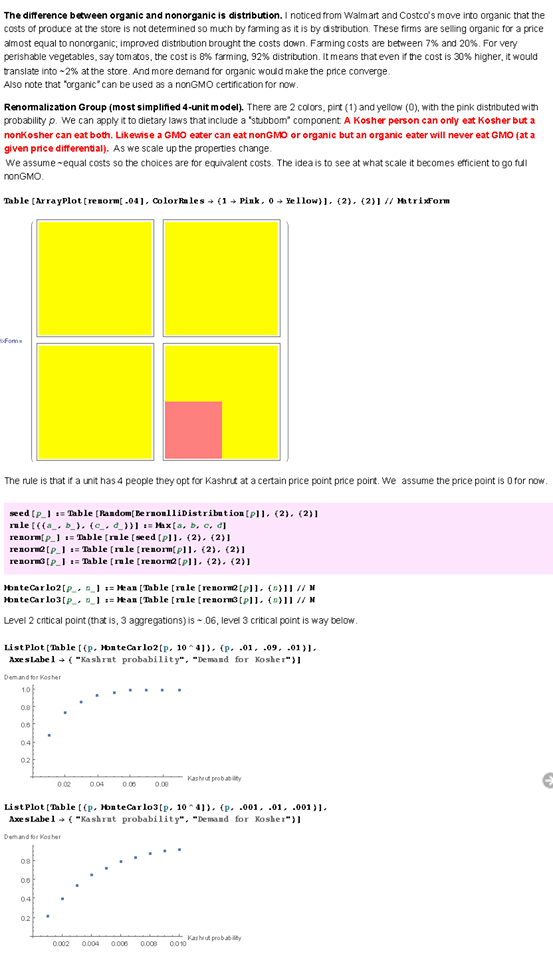Why GMOs are pretty much a lost cause, economically.
There is an asymmetry as follows. A tiny proportion of “stubborn” eaters could determine the consumption habits of the entire country. It is a key that Kosher people (representing <.3% of the US population) do not eat nonKosher, but nonKosher people eat Kosher. Many goods are Kosher but nonKosher people can’t tell because they do not recognize the small cryptic (U) or (K) sign on the can.
Which is why it suffices that a tiny portion of the population becomes “stubborn” NonGMO for the entire food to be NonGMO.
Now I discovered that the difference in price at the supermarket level between organic and nonorganic comes from distribution, not production. Production costs play a tiny role. Costco and Walmart are now into organic (they represent about 4% of US GDP) and growth of organic would not depend on demand, but on distribution efficiency.
—
Where does this nonlinear effect come from? If the price differential is small, it is easier at a wedding to accomodate NonGMO people by having everybody eat so, rather than introduce a new category. Same thing at the level of a restaurant or a supermarket. This “scaling” is called renormalization group. I did a bit of work to show the asymmetry in attached exercise. Ignore the exact numerical details; what matters is the nonlinearity, how things tip one way. The moral: the GMO industry spends time “converting” journos and others, but all this is a waste of time when it radicalizes a segment of the population.
—–
INSPIRED BY A CONVERSATION WITH SERGE GALAM.
—
PS: Got the GMO renormalization result in closed form: Renorm(n):=1-(1-p)^{4^n}… was too obvious.
via: Facebook
